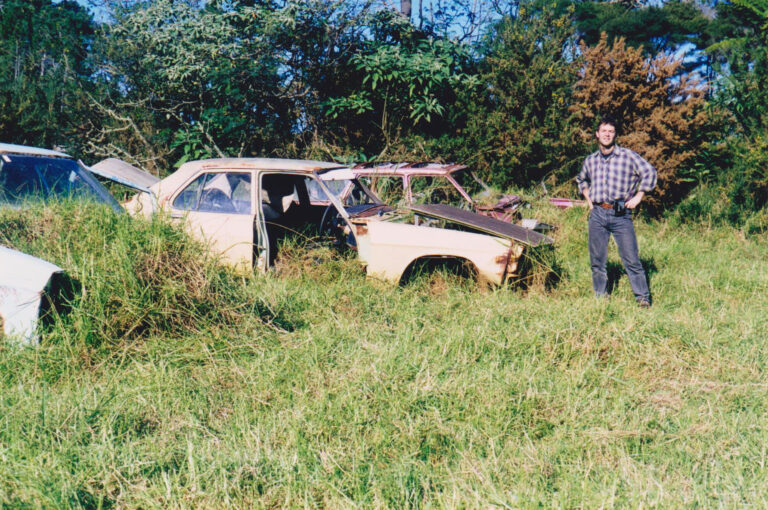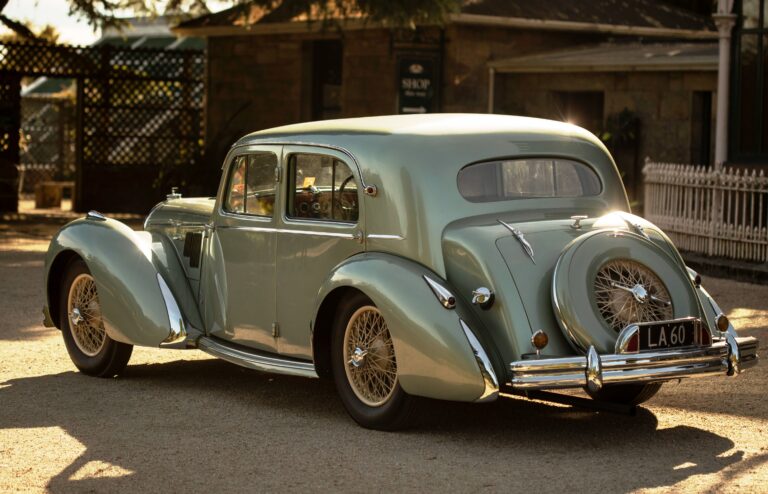We’ve featured two of John and Sandy Graham’s cars in the past — a 1949 Ford woody wagon and a 1948 Chrysler Town and Country woody convertible. We thought they were pretty special, but they don’t match the couple’s latest restoration project

Americans by birth and Kiwis by choice for some years, John and Sandy Graham left beautiful Golden Bay due to business reasons, and returned to the States to live. They’d made a lot of friends here, and learned that New Zealand has some of the world’s most competent and competitively priced car restorers. They were so pleased with the restoration and uprating of their Ford single-spinner wagon that their Chrysler was shipped out here for a complete restoration. And that’s why their Alvis Speed Twenty was also sent from America to be restored by Errol Tempero of Oamaru, well-known as one of the best in the business.
John picked Errol because, “Tempero understands and perfects the knowledge of British cars and panel-beating to a high degree.”
John’s right — along with 64 D-Type Jaguars, Tempero has also built six Jaguar XJ13s and five Aston Martin DBR2 replicas. Errol’s company has restored many vehicles, including alloy-bodied Jaguar XK120 chassis #47, steel-bodied XK120s, E-Type Jaguars, one of only 10 right-hand-drive XK 150S 3.8 dropheads and a 1952 Glocker Porsche. John bought a Tempero D-Type in 2000, so he knew what standard of workmanship to expect. However, unbeknown to John, Errol had sold his coachbuilding business. John’s telephone call came shortly after Errol had left the company in 2005, but he tracked Errol down, and he agreed to take on the project anyway.
John’s brief to Errol was that the Alvis was to be rebuilt to a standard that would make it eligible for the Pebble Beach Concours, but he wanted to retain as much of the original car as possible. Woodwork, panels and mechanical parts, in fact all parts, were only to be replaced as a last resort.

Although the car was complete, which simplified the restoration, it was the usual story. Errol had to replace a lot of the timber framing, particularly around the back of the car. One of the first jobs was to remove all the body panels from the framing to reveal the extent of the work involved. By the time the woodwork was done and the chassis had been refurbished (that was in 2007) Errol’s son, Rod, had started a car restoration and recreation business on his own account, and Errol suggested he finish off the Alvis.
Rod and his team have recreated Ferrari 250 GTOs, a Ferrari P4, a Maserati A6GCS, a Lister Jaguar, an XKSS, and more, and restored an A6GCS, a Maserati 3500GT, a Cooper Bristol and many others. All have been produced to unbelievably high standards, and it was hard for John to imagine anyone better qualified to restore the Alvis.
Poor Shape
Many of the body panels were in poor shape and needed huge amounts of work. For example, only the front centre sections of the front mudguards were retained. The rest of each panel was battered and rusted beyond repair. The spare-wheel well, sections below the doors, and the rear sections of the back guards also had to be replaced. The good news was that the door panels were in almost perfect condition, and needed little more than to be screwed onto the new timber framing.
The complete engine was sent out to Rod’s rebuilder of choice, Auto Engineers in Timaru, where the block was bored and sleeved to take new piston sets. Stephen Coster of Blackhawk Industries in Oamaru, who had worked for Errol, used more than five hides to reupholster the seats. Battery Auto Electric of Oamaru looked after the small amount of wiring in the Alvis, as well as rebuilding the starter motor and magneto.
The brightwork was nickel-plated at John’s request, rather than chromed, to replicate the original finish.
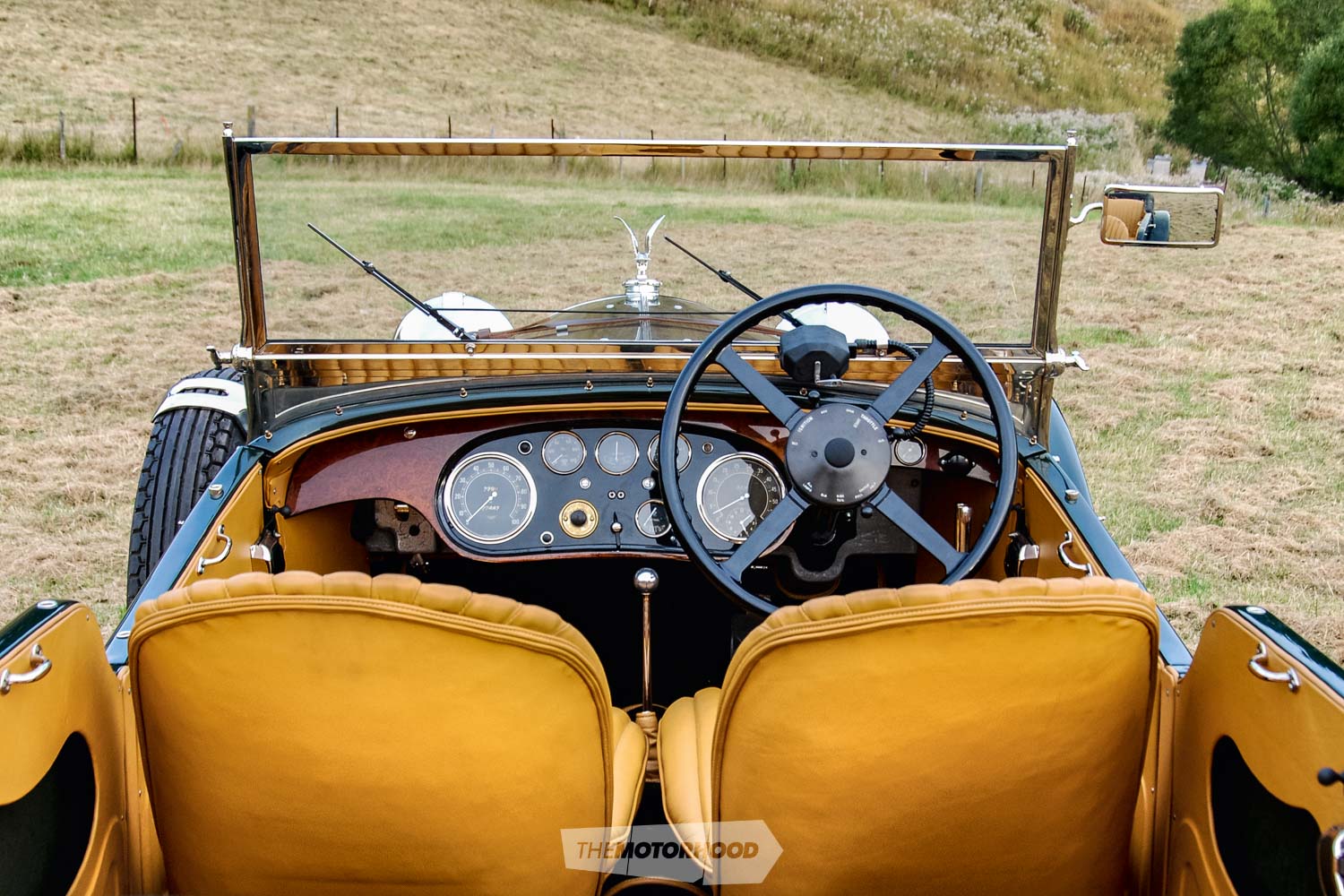
All other work was handled by Rod and his team of expert specialists, and that included checking over the drivetrain, brake reconditioning, dashboard veneering, refurbishing the steering wheel, fabric trimming of the body, and painting. John’s colour choice was a little unusual, being the 1953 Jaguar version of British Racing Green, a darker and slightly less glossy shade than would normally be chosen, and an inspired choice.
John thought he knew what to expect, but he wasn’t prepared for what he got. Aside from the beautiful workmanship, he commented, “I wouldn’t want to navigate around a crowded car park, as you need two hectares to manoeuvre the car around, but the handling was good beyond that. It had surprisingly quick take-off when you put your foot into it. The gearbox worked better than any other vintage car I’ve had up to, say, a 1936 Ford.
“The sports car feel surpassed any I have felt, even from the modern race-version Ron Fellows’ Z-06 Corvette I had. The sound of that deep six-cylinder gave me goosebumps just running down the road. It represents a sports car well in advance of its age, and is indeed a joy to drive. I didn’t put it through any fast pace, but had it to 60mph [96.5kph] and it had quite a bit more, I would say it would be comfortable in the 80mph range with a nudge towards 90-plus [145kph].”
Rod Tempero confirmed during his test drive that “the engine pulled well, the gearbox was very smooth and, being all synchro, nice to use. The car drove well on the road and steered well. It drove like a new car in that there were no rattles or shaking.”
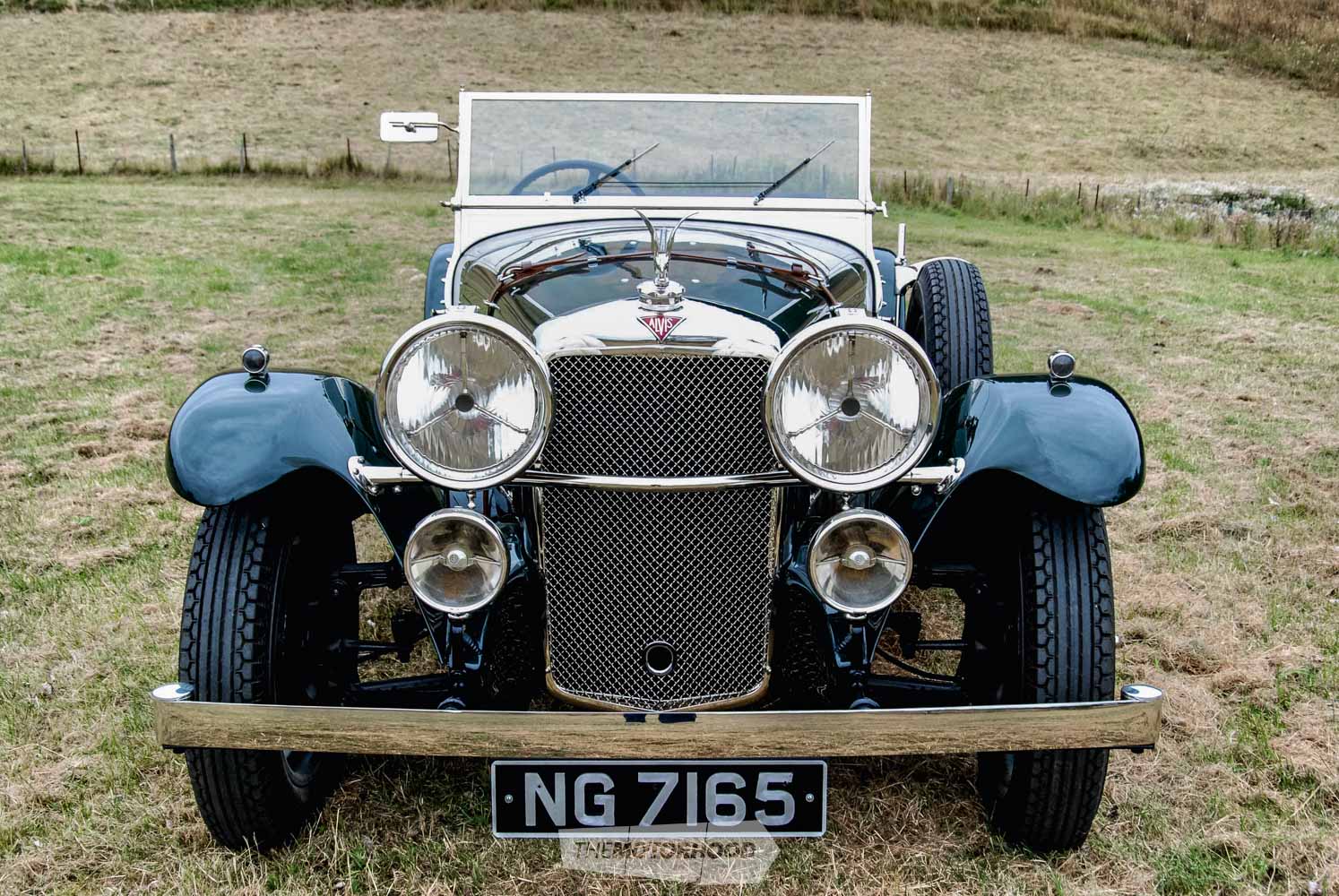
The Alvis was to be rebuilt to a standard that would make it eligible for the Pebble Beach Concours
To Pebble Beach
Given the magnificent effort by Rod and his team, the Alvis would have been a shoe-in for Pebble Beach acceptance, but it wasn’t considered, for two straightforward reasons. A competitor is allowed to enter only one car per year, and the Grahams’ 1937 Lincoln seven-passenger touring car had already been accepted for judging. Each year, Pebble Beach features one marque, and for 2013 it celebrated Lincoln. As it was one of just seven built and the 1937 parade car for the governor of New York, the organizers were understandably very keen to have the Grahams’ car as part of their celebration.
However, the Alvis was still at Pebble Beach, but in the auction. For health reasons, John is downsizing his fleet as part of the deceleration of a spectacular life lived at top speed. Sadly for him that includes farewelling the Speed Twenty. Consequently, discerning collectors had the chance to buy a special and usable car.
Because, like any Alvis, it is a special car. The first Alvis car, the 10/30, appeared in 1920. It quickly proved to be a good car with some sporting pretensions, and sold well. Soon there was a new overhead-valve engine and lightweight aluminium bodies. A move into competition was inevitable, and a modified 1500cc 12/50 model won the Brooklands 200 Mile race in 1923.
The chief engineer was Captain George Smith-Clarke, a brilliant ex-Daimler man who ensured that Alvis continued to excel in competition and prosper in the marketplace. In 1925 Alvis announced its first front-wheel-drive car, designed by Smith-Clarke and powered by a 12/50 engine turned end for end. Front-wheel drive became an Alvis trademark, and it went so far as to build a 1500cc twin-cam supercharged straight-eight Grand Prix car, featuring independent front suspension as well as front-wheel drive. It didn’t compete in a Grand Prix, but it was certainly one of the more interesting GP cars, and some of its technology found its way into Alvis road models.
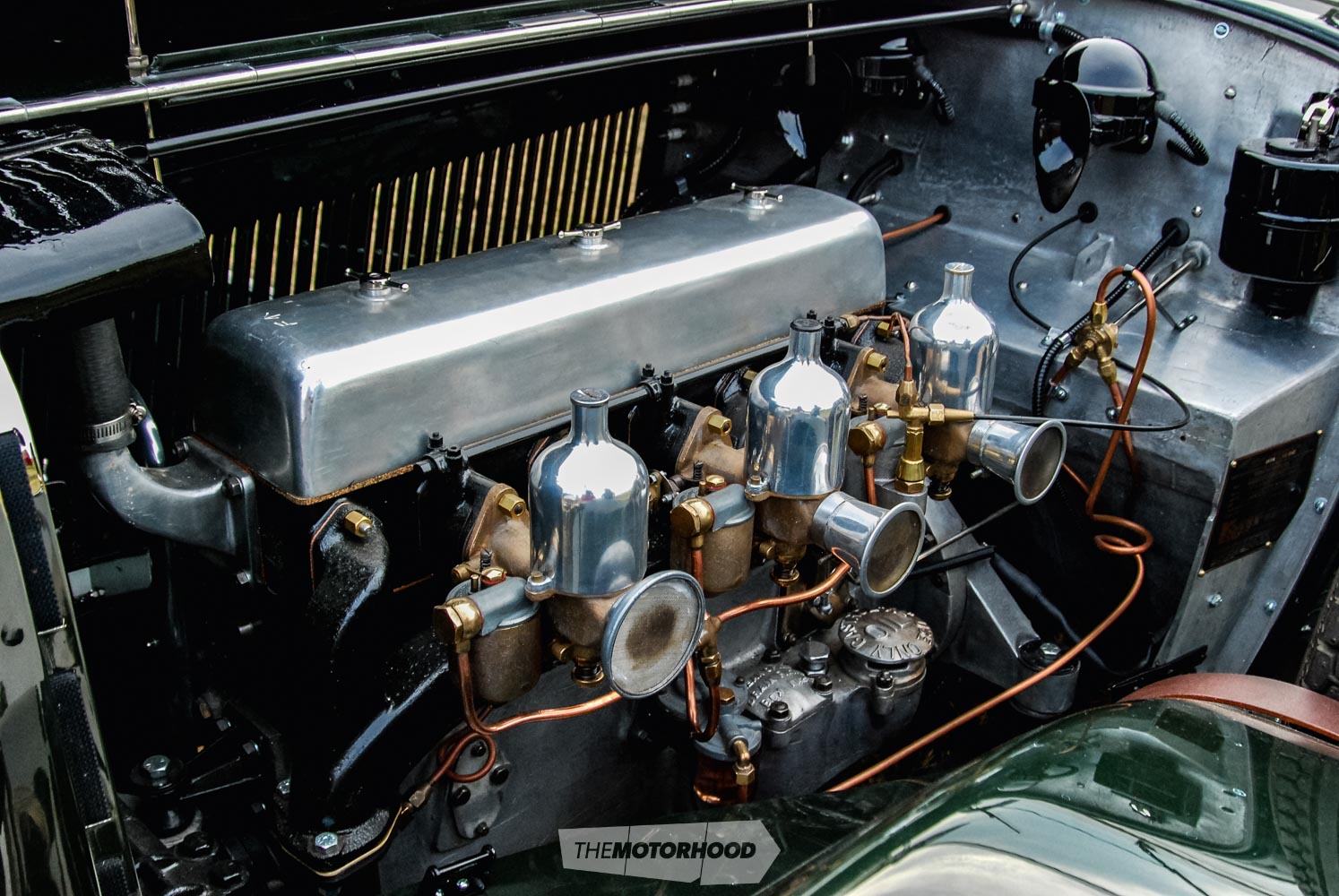
Too Innovative
At the start of the 1930s, Alvis concluded that its front-wheel drive cars were sound, innovative and competitive, but perhaps too advanced, particularly for the average mechanic’s skills at the time, so they reverted to more conventional engineering. >
The Speed Twenty of 1932 was the first result — a superb chassis and running gear built by Alvis, which gave the buyer a list of preferred coachbuilders to create a body of the buyer’s choice. Cross & Ellis, Charlesworth, and Vanden Plas were three on that list, along with others who built limited runs or one-off specials. Cross & Ellis’s speciality was four-door tourers, while Charlesworth mostly built sleek saloons. Vanden Plas produced elegant two-door tourers and drophead coupés.
More conventional it may have been, but there was no doubting the Speed Twenty’s especially fine looks and quality. The first model, the SA, was powered by a straight-six engine of 2511cc, with the gearbox joined to the engine. The engine’s features included a separate water feed to the cylinder head with no ports through the head gasket. The head and block were made of cast iron, mounted on an aluminium sump. Most sources state that ignition was by twin magnetos, but on the Grahams’ car the starter motor, water pump and single magneto are mounted in-line on one shaft along the side of the engine.
The SB was introduced at the 1933 London Motor Show. A new chassis mounted the gearbox further back, where it was connected by a jackshaft to the engine. The box had synchromesh on all four speeds, the first in the world to do so, but Alvis later reverted to non-synchro first gear to reduce costs. The SA’s solid front axle was replaced by the GP car’s independent wishbone and transverse-leaf suspension set-up.
The chassis included refinements like inbuilt jacking, and a complicated central lubrication system that oiled 30 separate points throughout the chassis at different rates as required. Adjustable dampers were controlled from the dashboard, initially at the rear only, and later on the front as well.

The brightwork was nickel-plated at John’s request, rather than chromed, to replicate the original finish
Although the engine was relatively powerful, the beautifully engineered chassis was heavy, and the coachbuilt bodies tended to be a bit overweight, so the Alvis gave sprightly rather than sparkling performance. However, its 65kW could still get the car up to 143kph and from 0–100kph in just over 15 seconds; very respectable at the time.
In 1935 Alvis announced the SC, with a 2762cc engine. The last model was the SD, which arrived and finished production in 1936, to be replaced by a new model, the Speed Twenty Five with an optional 3571cc engine that could reach 154kph in saloon form. The Speed Twenty Five models were later renamed the Crested Eagle and Silver Crest, and were capable of the magic 162kph (100mph).
SCCA Racer
John and Sandy Graham’s Speed Twenty is a 1934 SB model, car number 16394. As such, it enjoys that model’s refinements — independent front suspension, a revised chassis and fully-synchromesh gearbox. Their car doesn’t have some features normally associated with the Speed Twenty, such as an inbuilt jacking system and adjustable dampers, although it has the Luvax-Bijur central lubrication system.
Painted green with green wheels, green leather trim and a black hood, it was despatched to Messrs Mann Egerton of Norwich on June 6, 1934, which in turn delivered it to its no doubt excited owner, Mr G B Pearce of Hampshire. It found its way to America in 1961, one of two imported to that country by Al Chambers of Powell, Ohio, specifically for Sports Car Club of America (SCCA) vintage racing. Chambers, a mechanical engineer for the Ford Motor Company and a vintage racing enthusiast, kept the other car and sold this one to Roy Tausch of Novelty, Ohio.
Happy Accident
Roy raced the car periodically in the ’70s at Watkins Glen, Mid Ohio, and Nelson Ledges, until falling ill in the mid 1970s. He died in 1982, and his widow vowed not to sell it. The Grahams found the car by accident in 2006, almost literally tripping over it. John had gone to inspect another car and immediately identified a nearby shape under a tarpaulin as an Alvis Speed Twenty with a standard Cross & Ellis four-seater sports tourer body. The cover was removed to reveal the complete-but-tatty Alvis that had travelled just 38,624km (24,000 miles) from new — the barn find we all dream of.

Roy’s son had to go across the road to ask his mother if she was willing to sell it. Obviously impressed by John’s Alvis knowledge, his long-time ownership of an Alvis TA21 woody wagon and membership of the UK and New Zealand Alvis Owners’ Clubs, the old lady must have decided John was a suitable person to take over the ownership mantle.
The Speed Twenty is often regarded as one of the best-looking cars of the 1930s, and it’s easy to see why. The long bonnet, low body, big wire wheels and a myriad of lovely details add up to a superbly stylish car, dominated by those magnificent 305mm Lucas P100 headlamps. The smaller lights below provide dipped beam.
The Alvis sold at the Pebble Beach auction for US$170,500 — someone went home with a superbly restored piece of British and American history.

1934 Alvis Speed Twenty SB
Engine: Six -cylinder in line, water cooled
Capacity: 2511cc
Bore/stroke: 73x100mm
Comp. ratio: 6.33:1
Valves: OHV
Carburettors: Three SU SS4s
Max. power: 65kW at 4000rpm
Transmission: Four-speed manual
Steering: M Weller recirculating ball
Suspension (F/R): Independent with wishbones and transverse leaf spring / live axle with semi-elliptic leaf springs, Telecontrol shock absorbers
Brakes: 356mm drums front and rear
Wheels/tyres: Wire spoke 19×3.25-inch wheels, 31×5.50 tyres
Dimensions
Wheelbase: 3124mm
Track (F/R): 1422/1422mm
Overall length: 4572mm
Width: 1689mm
Weight: 1372kg
Performance
Top speed: 143kph
0–100kph: 15.2sec
Economy: 16.6/100km
Production
1932–’36: 1165 (models SA to SD)




